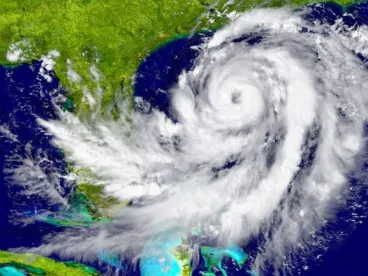As the East Coast braces for yet another hurricane, we should contemplate the impact that natural disasters can have on employees and employers, both personally and professionally. While individuals prepare their homes and employers prepare their businesses for the physical damage, employers will benefit from also assessing the practical and legal implications surrounding the unpredictable events Mother Nature throws our way—and planning accordingly.
Employers, of course, cannot predict whether or when a natural disaster will occur, but they can put plans in place for addressing unforeseen disasters. A disaster plan can enhance worker safety and morale, as well as maintain a company’s reputation and profitability, possibly even a company’s existence. In addition, effectively handling a workplace crisis provides an opportunity to demonstrate expertise, sensitivity, and competence in a high-stakes situation.
Creating a Preparedness Plan
To prepare a disaster-readiness plan, an employer should consider starting with a risk assessment that identifies the most common disasters threatening the business. Resources abound, from the Federal Emergency Management Agency (FEMA) to the Occupational Safety and Health Administration (OSHA) to the Centers for Disease Control and Prevention (CDC), to help identify the most prevalent threats. Then, the employer may want to create a disaster-readiness policy that addresses the impact on employees and on the business, focusing on keeping the business operating. Such preparation requires determining which staff, materials, procedures, and equipment are necessary to keep the business open. An effective plan also includes an emergency notification system through text, email, or the company website. To do this, employers should consider having an updated contact list for employees and local and federal authorities, with the list identifying critical employees and their roles during a disaster.
While the next parts of the plan may seem like common sense, they are nonetheless worth delineating and incorporating: gathering and storing emergency supplies and developing an evacuation strategy, including who has authority to order an evacuation. Once those necessities are covered, planning for business continuity comes into focus, as it is prudent to identify the most important customers and how to serve them during and after the disaster. The employer may want to designate key vendors and contractors (and alternates, just in case), notifying them of the disaster preparedness plan to ensure cohesion. Finally, the plan ideally should provide for access to both technology and key documents and information, such as through a cloud-based document system, during the recovery period.
Key Takeaways
In summary, employers may want to consider having disaster readiness plans in place that
-
address the most common natural disasters likely to affect their businesses;
-
identify staff, materials, procedures, and equipment required for business operations;
-
implement emergency-notification systems based on up-to-date contact information;
-
provide for emergency supplies;
-
consider emergency evacuation;
-
prepare for business continuity; and
-
cover technology during the recovery.
Once plans are in place, employers should consider training employees on their responsibilities and periodically reevaluating the disaster plans, refining them as necessary. Through careful preparation, all employers can weather the storm while minimizing its impact on employees and customers.



 />i
/>i
